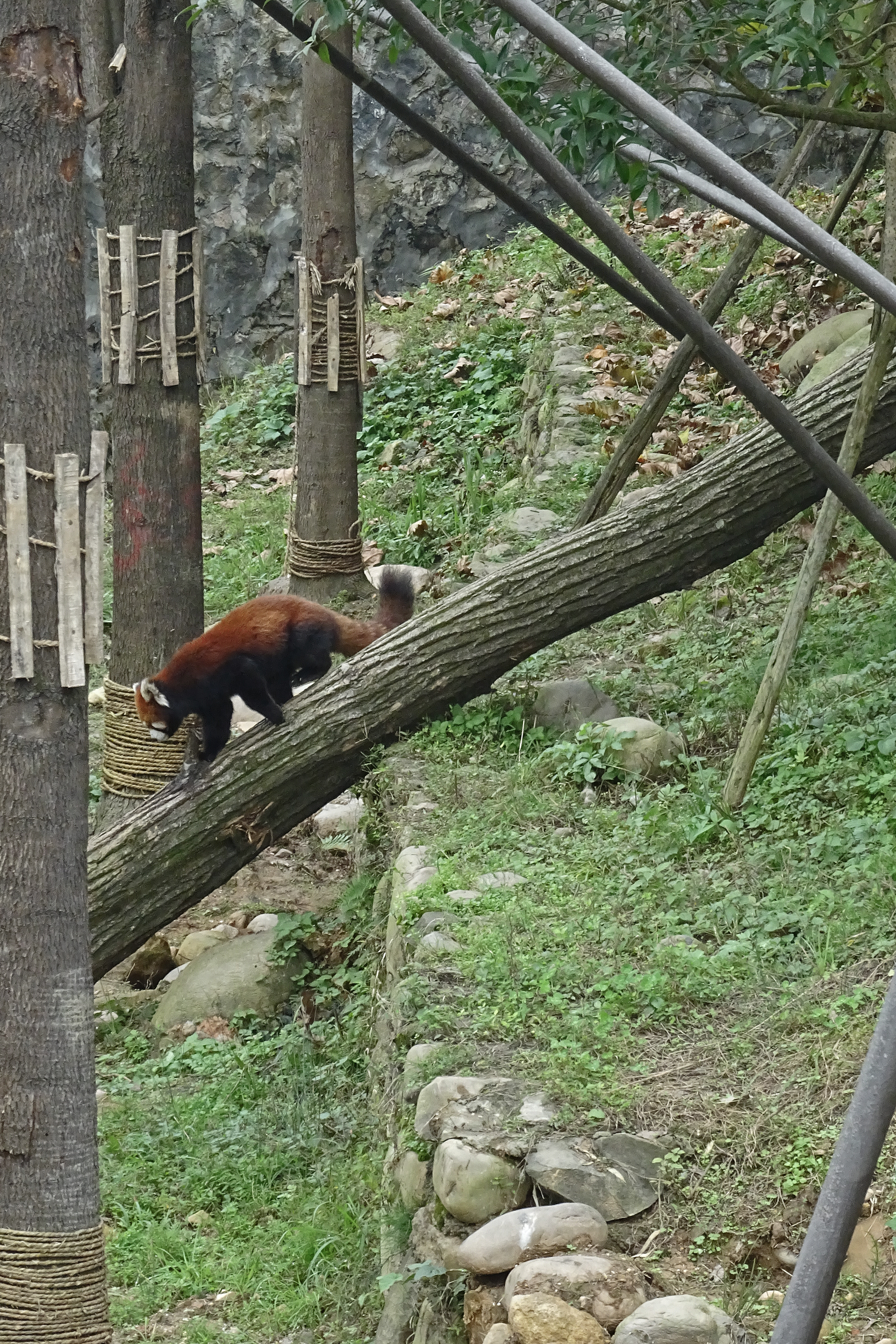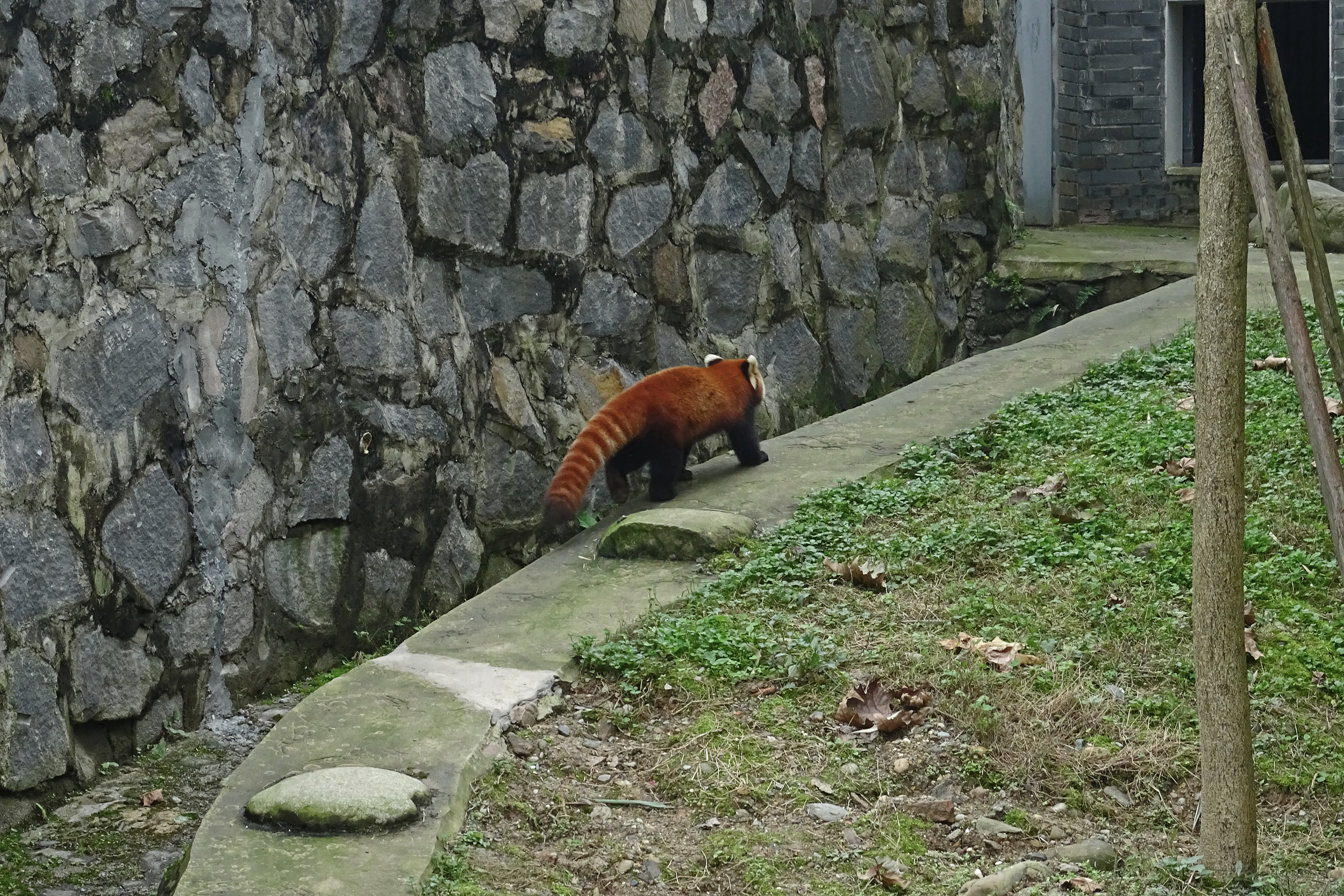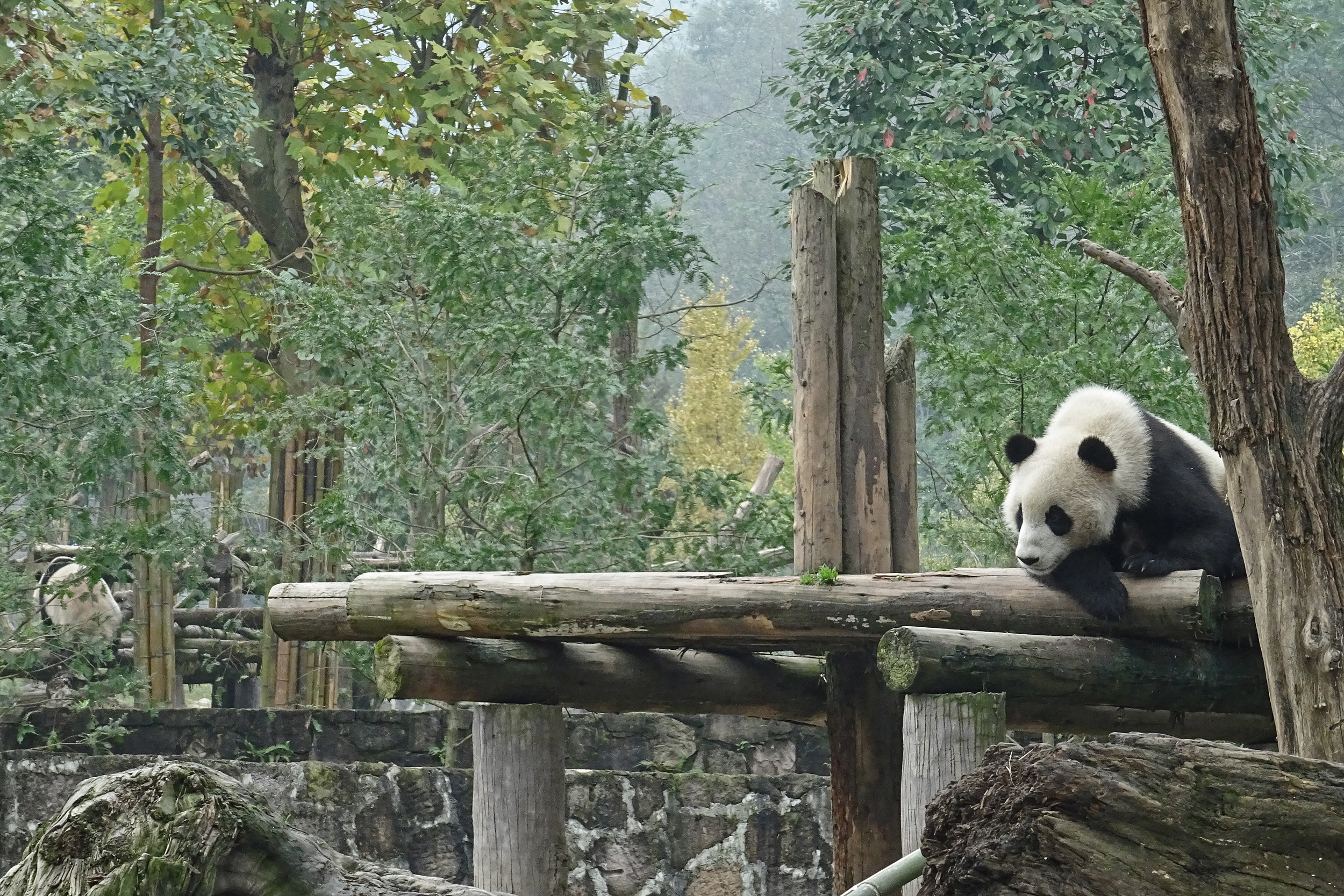I already wrote about the CCRCGP Dujiangyan Panda Base in my introduction post a little while back, and there I shared about my first trip to the base back in 2016 – I visited again in 2017 and got some great pictures from this trip too, I just had to put together a selection to share! On this trip I visited in an afternoon and the base was almost empty – there was a group doing the keeper experience (learning about pandas and their care, helping out with cleaning of the enclosures, and preparing the bamboo and other snacks), and a few visitors who were serious photographers, with camera lenses the length of my arm! But that really was it, we had the place mostly to ourselves, which was great to experience, and such a quiet and peaceful environment to watch the pandas from – which makes a big contrast to the Chengdu Panda Base.
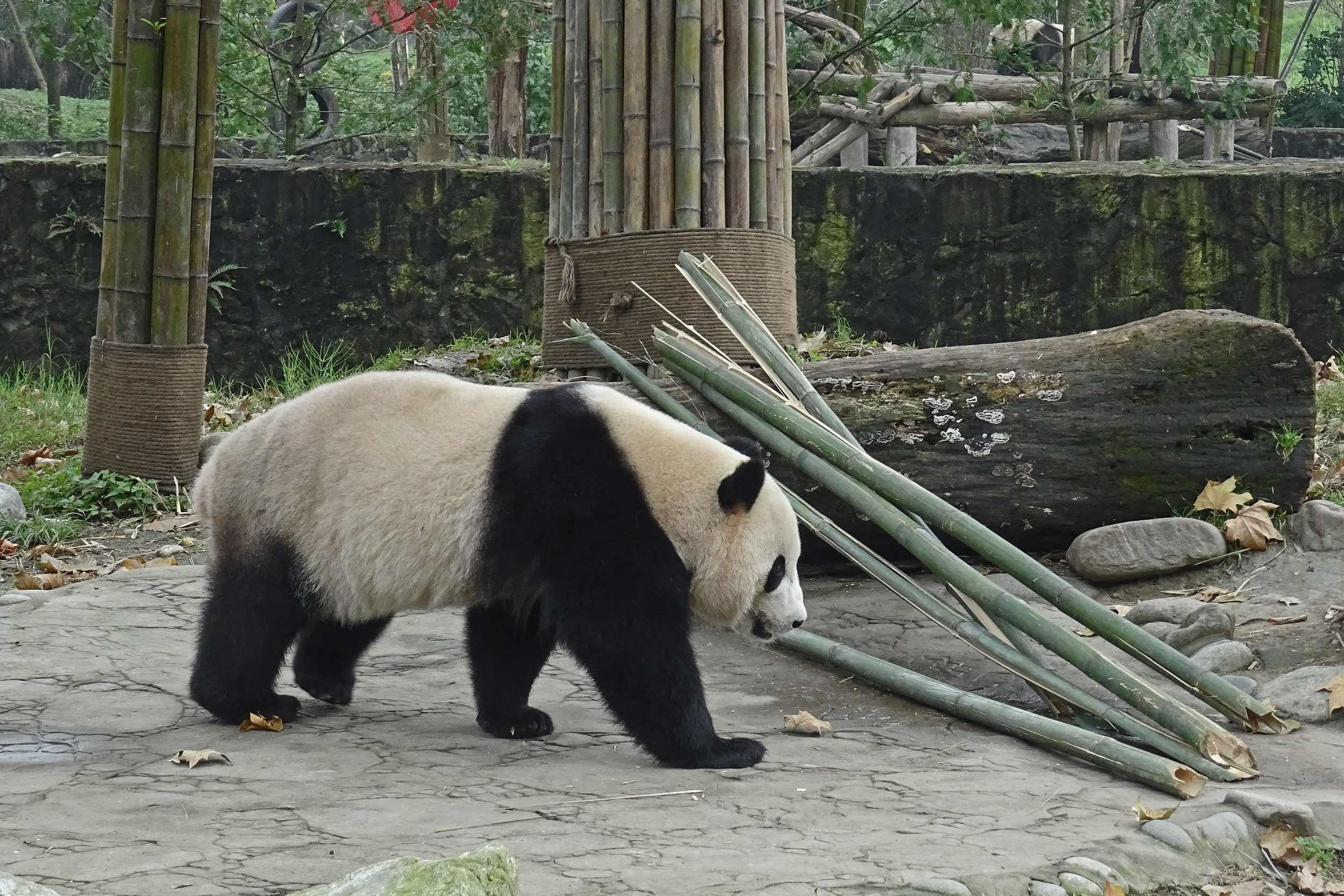
One of the first sets of pandas we saw were the first two cubs born in Smithsonian’s National Zoo, Washington DC – Tai Shan (male, born 2005) was already living in Dujiangyan on my visit in 2016 but I missed out on seeing him, luckily he was out and about on this trip, walking all over his outside enclosure, and he was definitely paying attention to his next door neighbour, little sister Bao Bao (female, born 2013). I think Tai Shan is a pretty handsome panda^ I’m not sure if he has moved from the Dujiangyan Base since 2017, but it’s quite likely – hopefully I will get to see him again on a future trip.
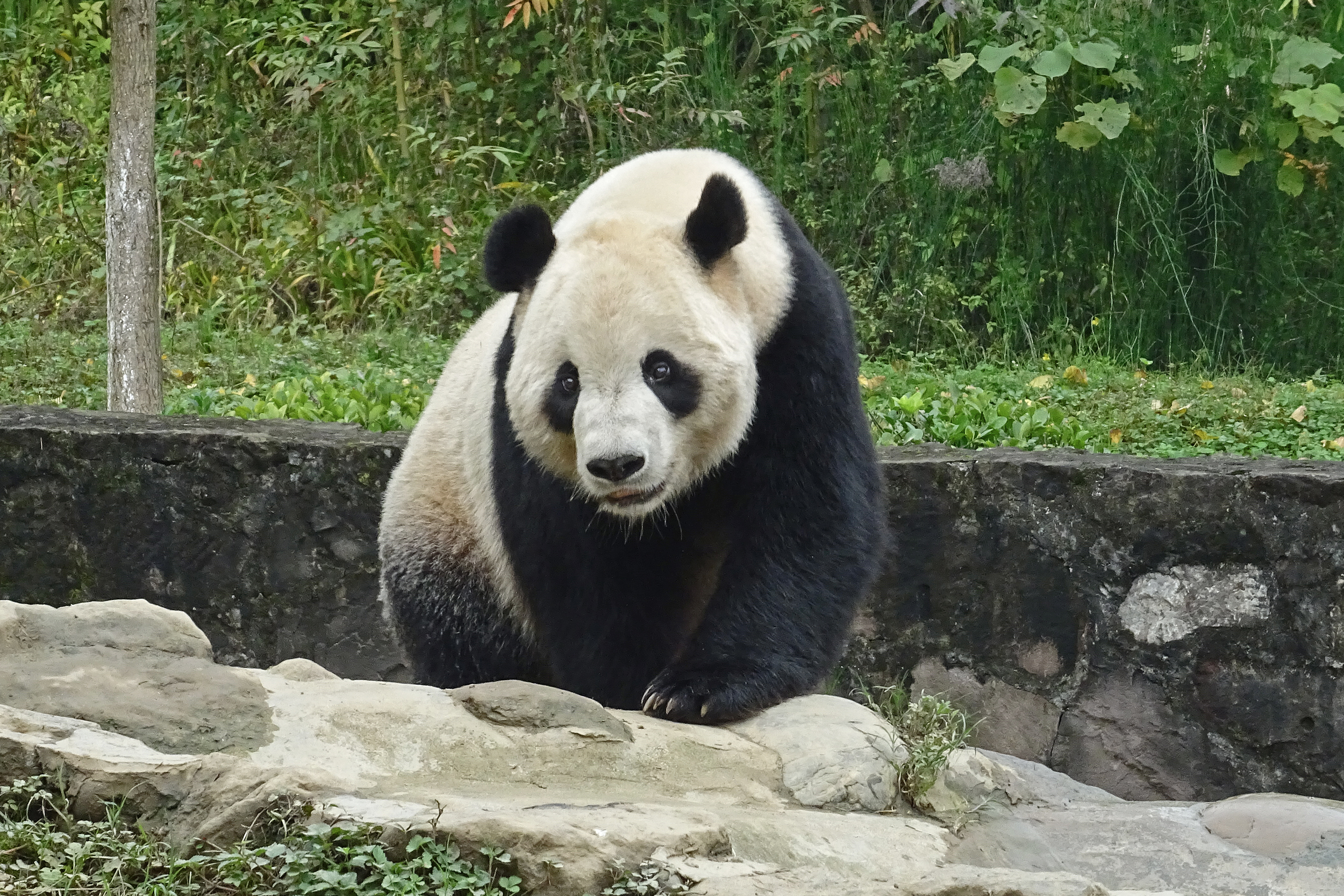
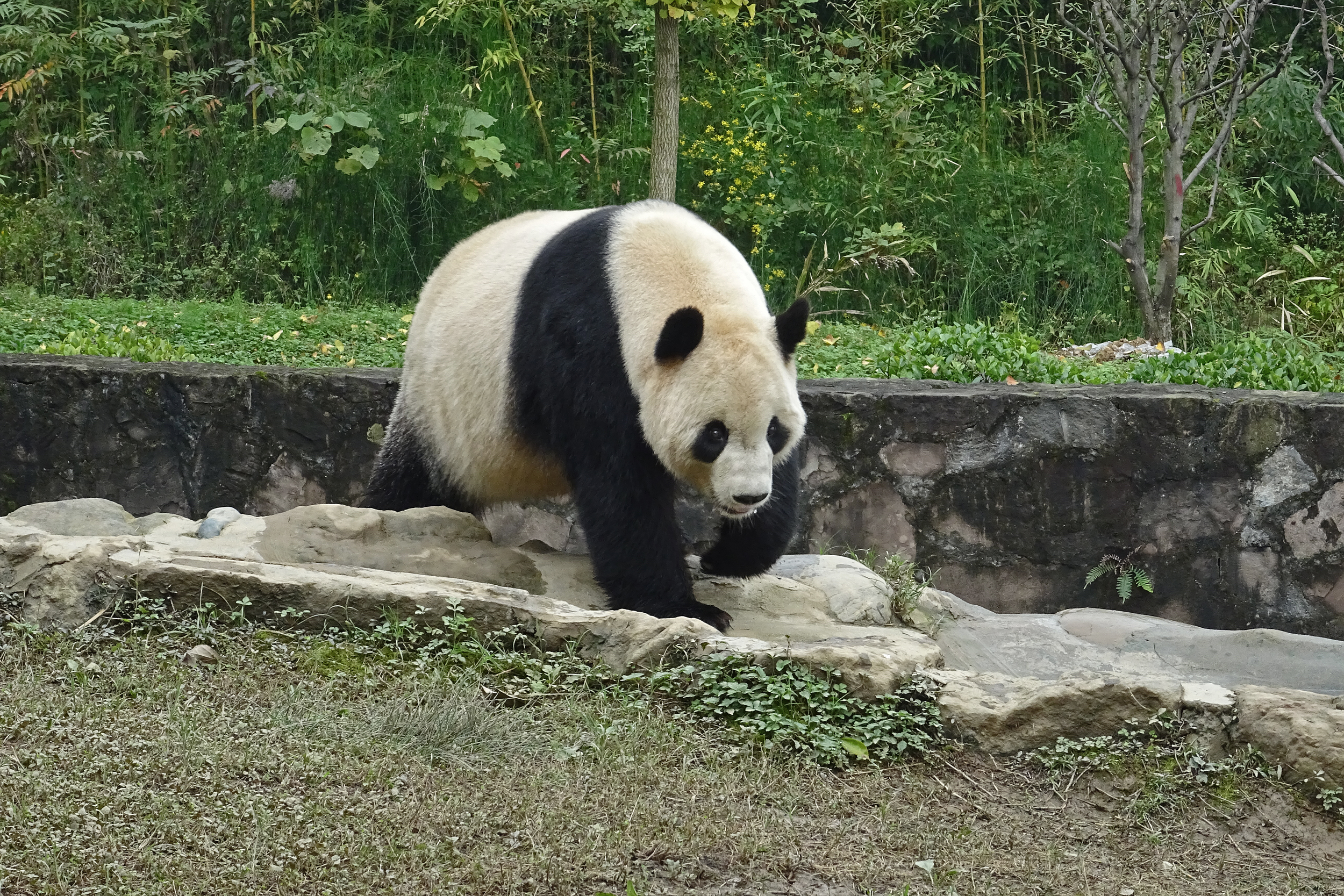
And here is Bao Bao! She was seeming very playful, and was moving all over her enclosure, and making good use of her climbing frame – she had a nice big outdoor space with plenty of different enrichment options, trees and frames to climb on and explore. It was also interesting seeing her doing a lot of scent marking. She didn’t seem to be as interested in Tai Shan as he was in her though! It was really great to see this pair of returned American-born pandas – and I’m glad that after this I was able to visit Washington DC and visit the rest of this panda family too^
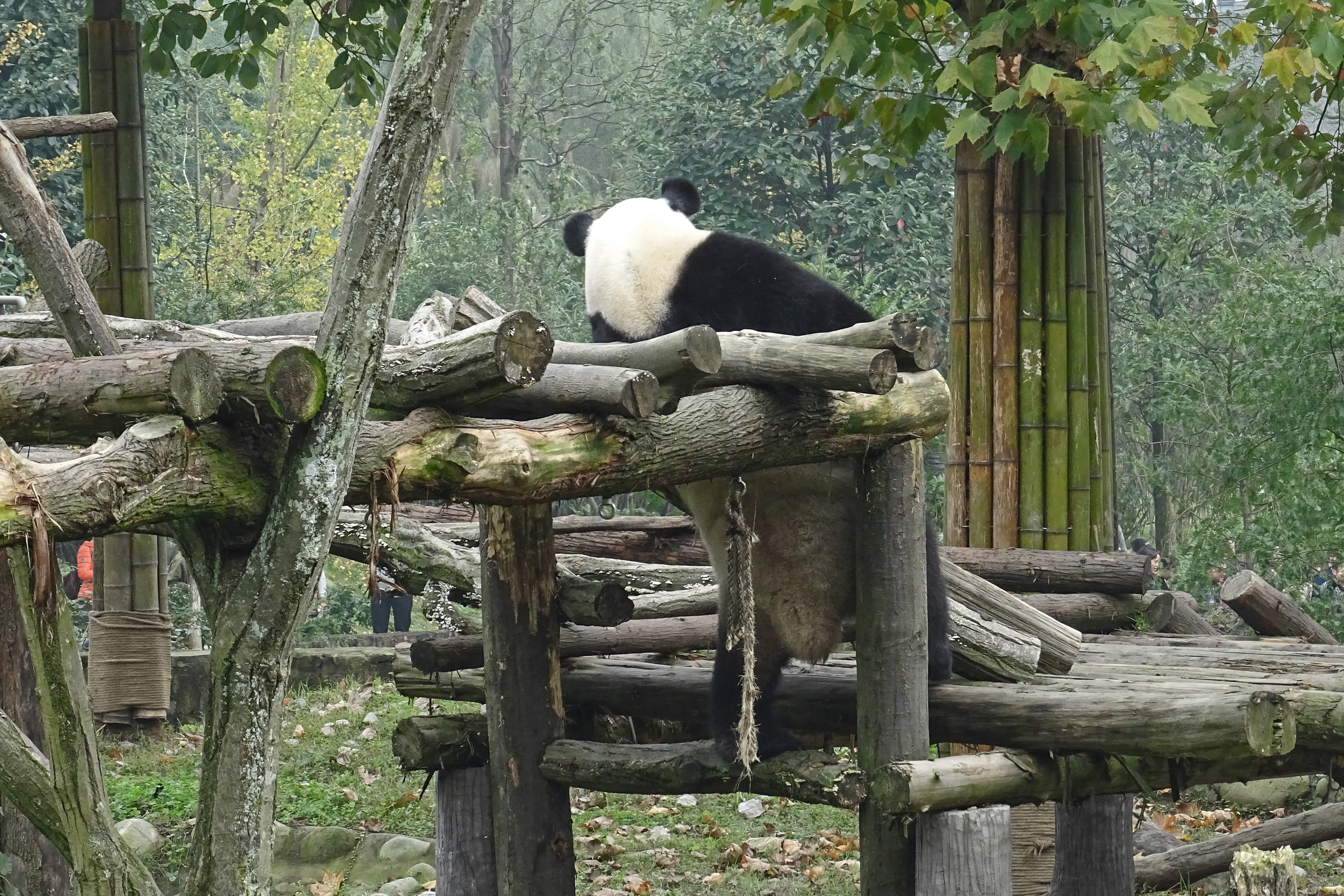
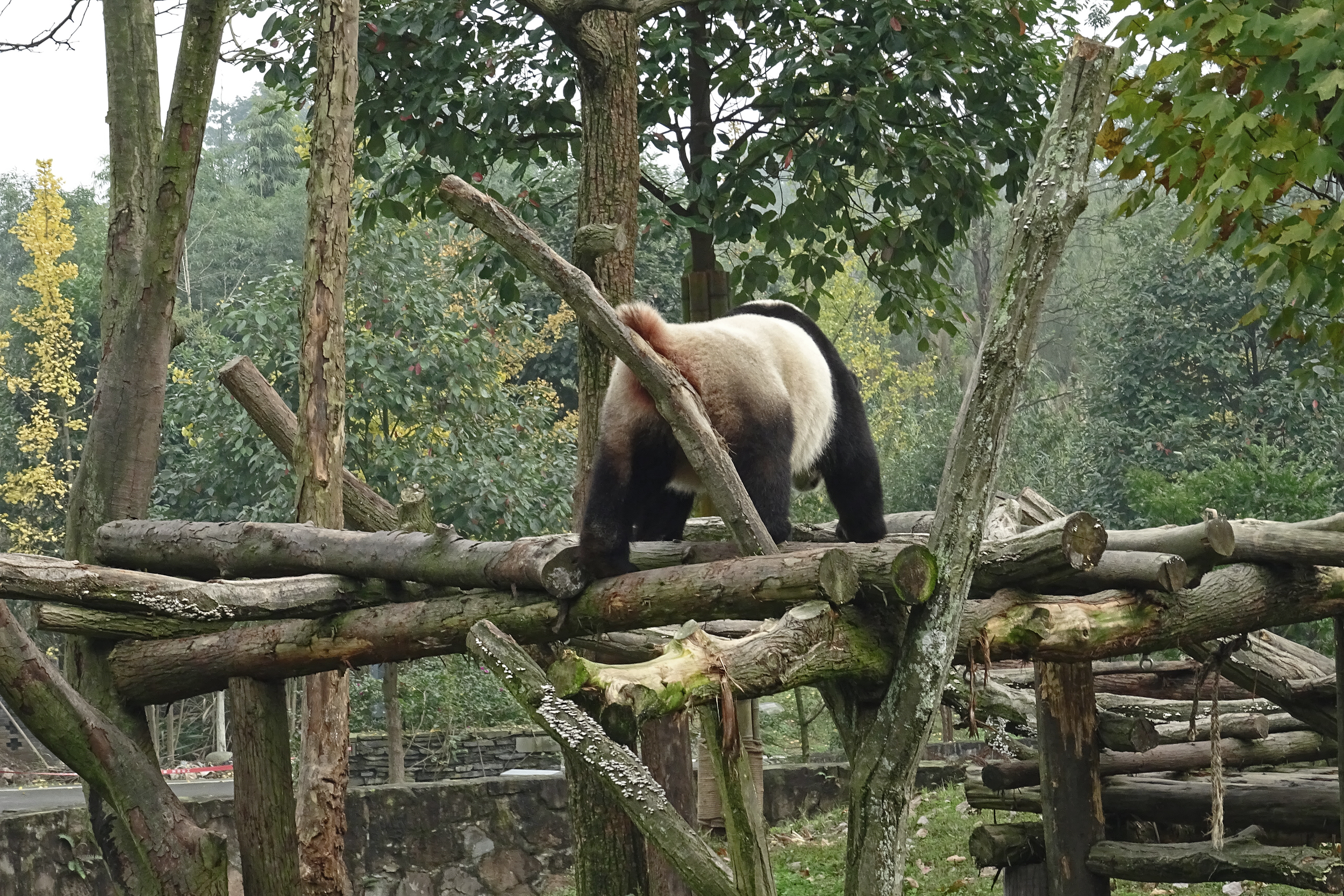
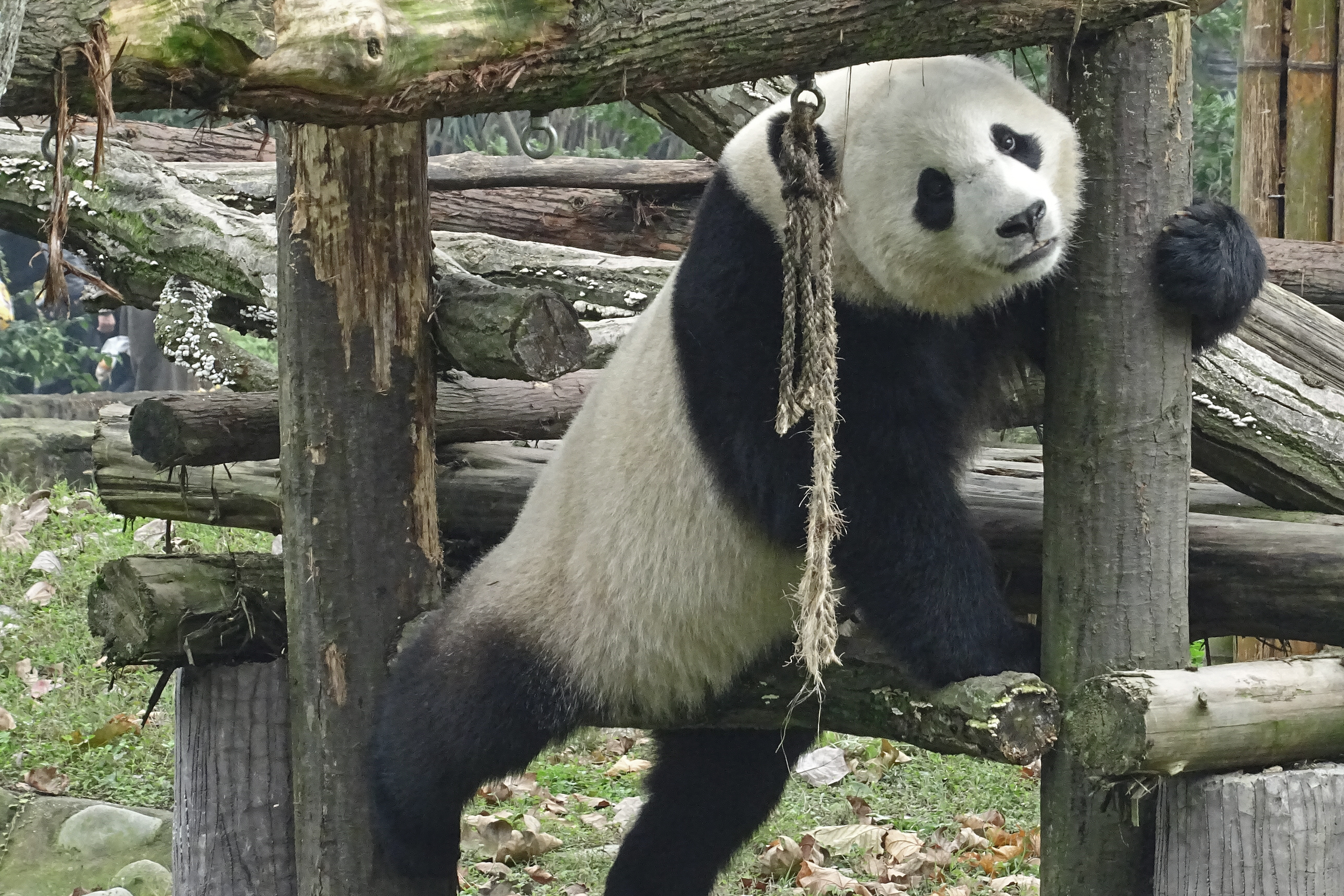
Of course there are plenty of other pandas living at the base – with the smaller number compared with the other bases, this means it’s easier to see every panda (if they are on show of course), and take plenty of time to watch, and make second or third trips around for another view. Here the indoor spaces are not open for view, you can only see the pandas when they are outside, and there are no covered or sheltered areas for you to watch the pandas under.
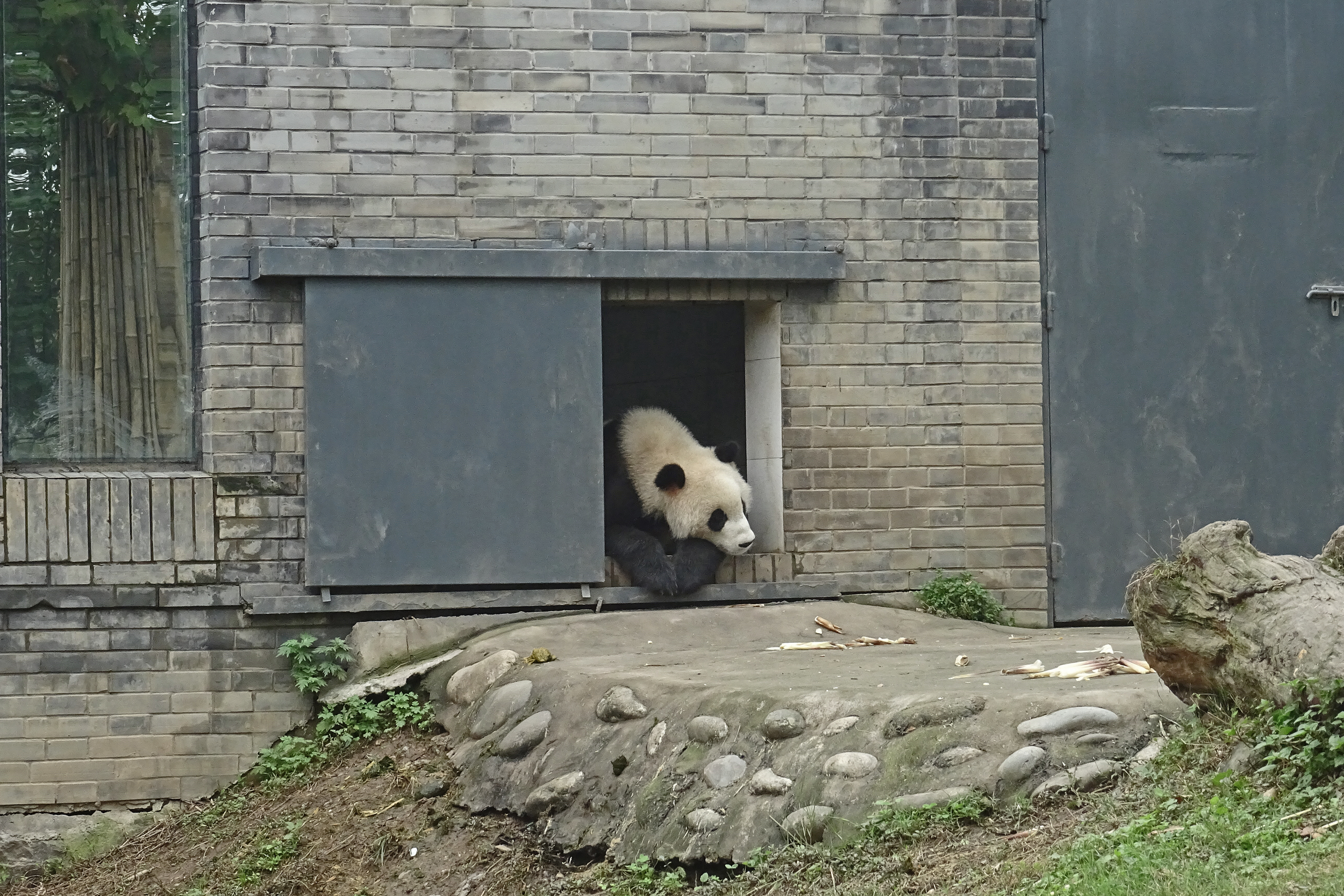
The enclosures which are further into the base, and thus further up the hill, are the most interesting ones, however they’re also the ones that you can see less of from the viewing points and a good camera would be needed to get pictures if the panda is towards the back of the enclosure. These are also (I’m quite sure) only viewable through glass, unless like me in this below picture you stand quite far back for a wider view. This is one of my favourite pictures from this trip, and the panda isn’t even front and centre in the photo! All of the enclosures have the pandas details, including place of birth which is particularly for the foreign-born pandas, in both Mandarin Chinese and English, so you will be able to know who you have seen.
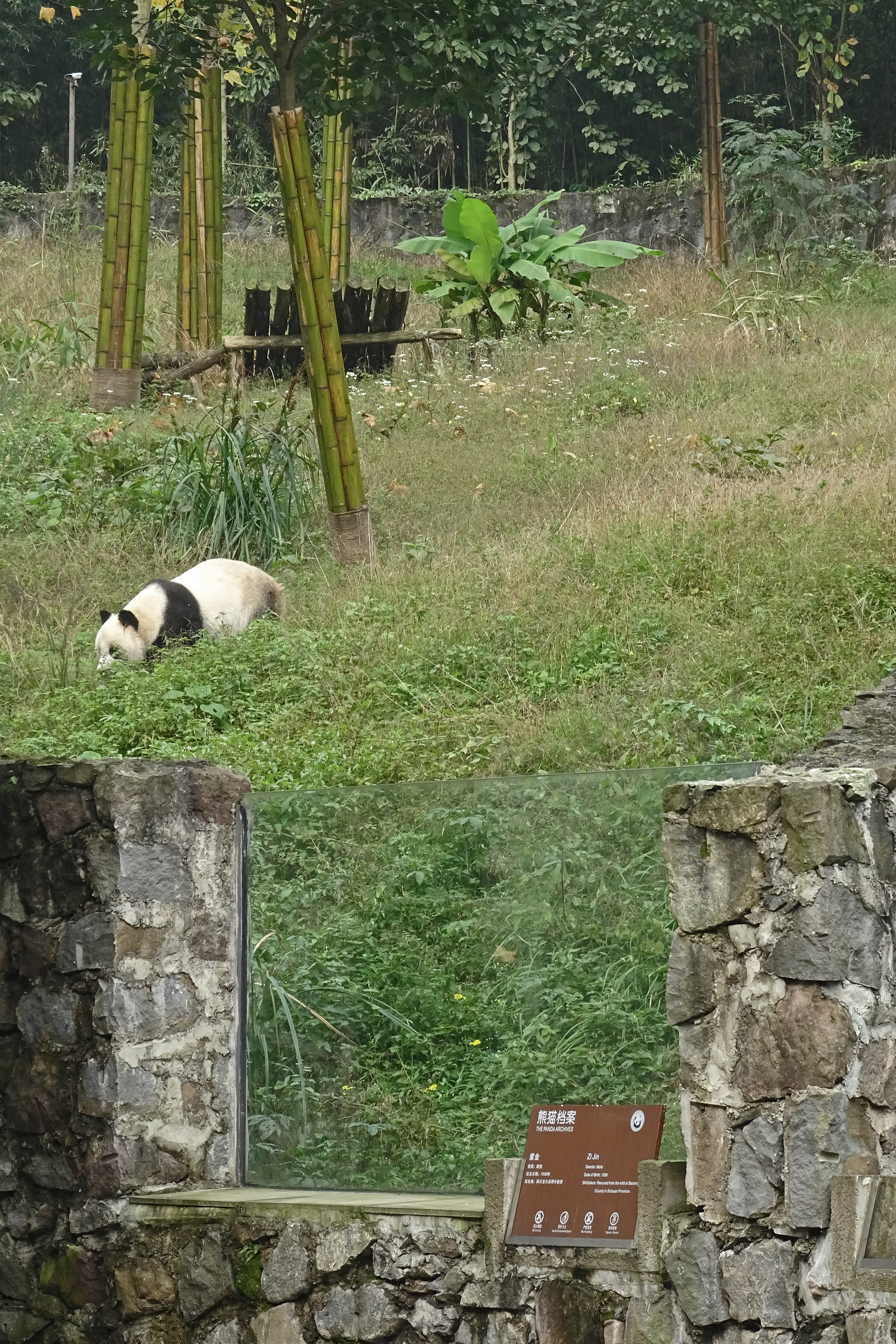
Whilst this base is typically for older pandas, those needing a special treatment, or those returned from abroad, on both my trips there were also a couple of enclosures with the younger pandas. These trips were in the days where holding a panda (or more, sitting next to a panda) for a fee was still allowed, so I believe these pandas were at the base for this purpose, or possibly being trained for this purpose. These little guys were just over a year old in November 2017 and were an absolute highlight to the visit. Whilst the adult pandas were mostly having post-lunch naps, these two were full of energy, playing with each other and their different enrichment toys, just so adorable^ The photographer with the huge camera lens was incredibly excited by these two, I think maybe he’d been waiting a while to get some good photos of them.
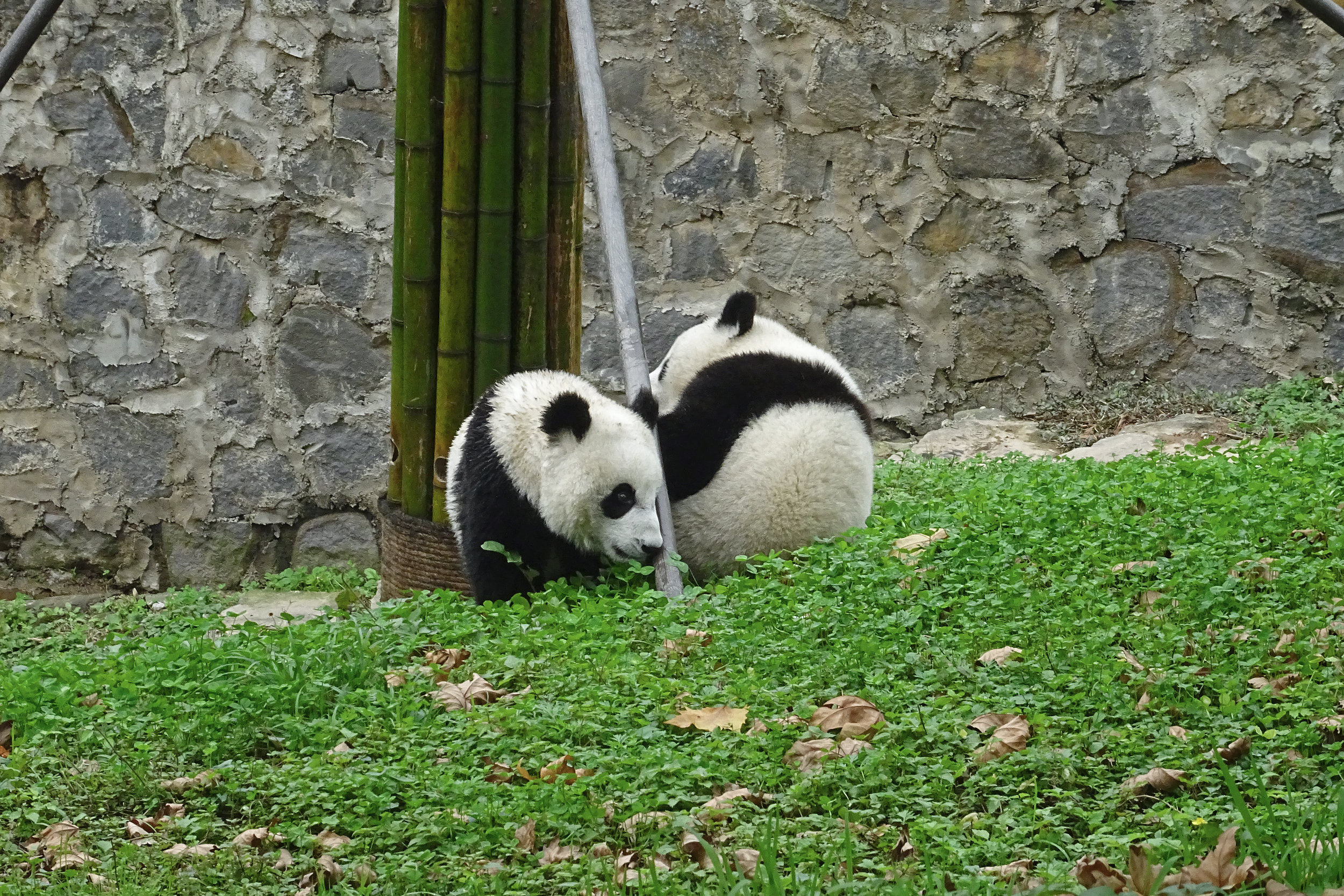
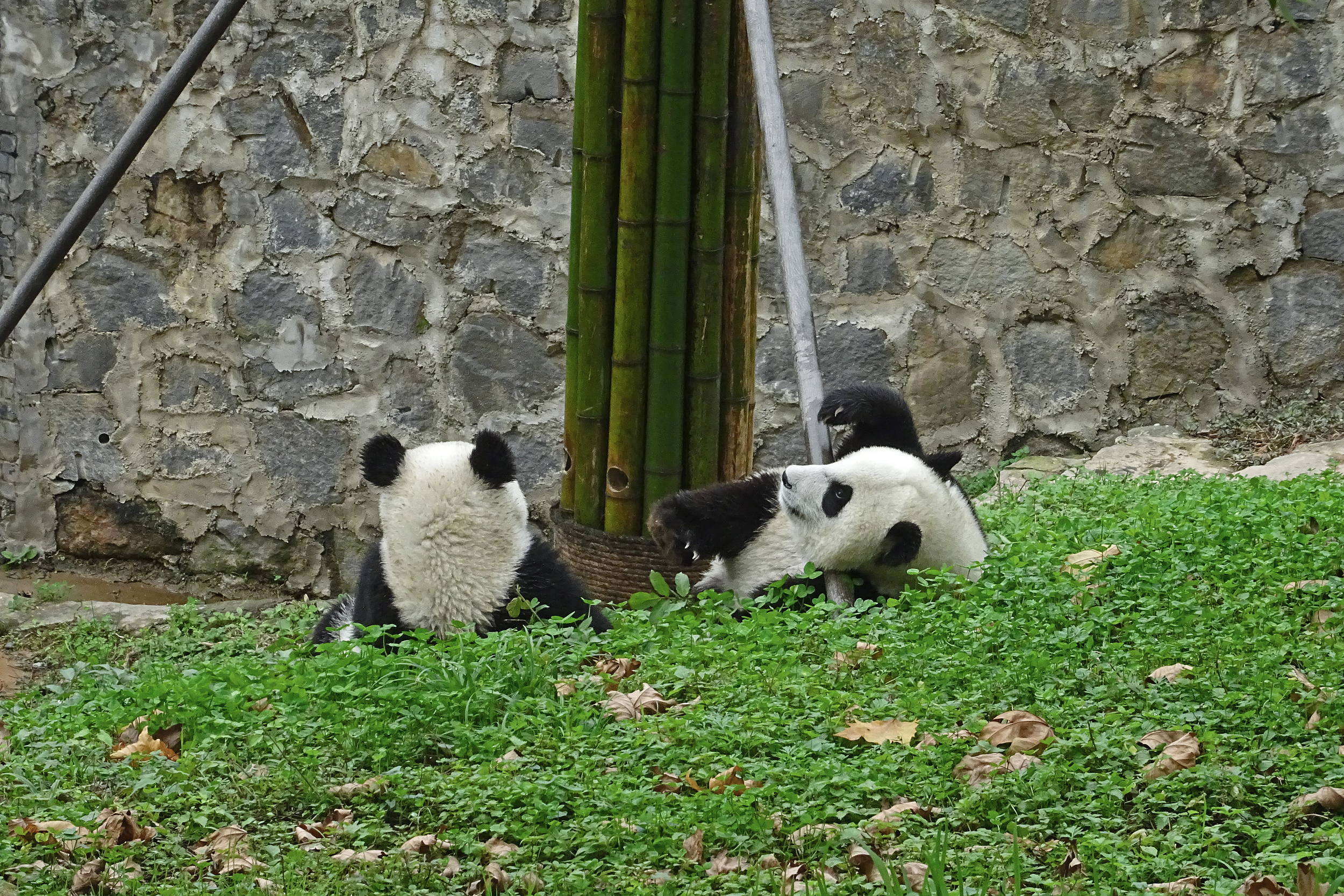
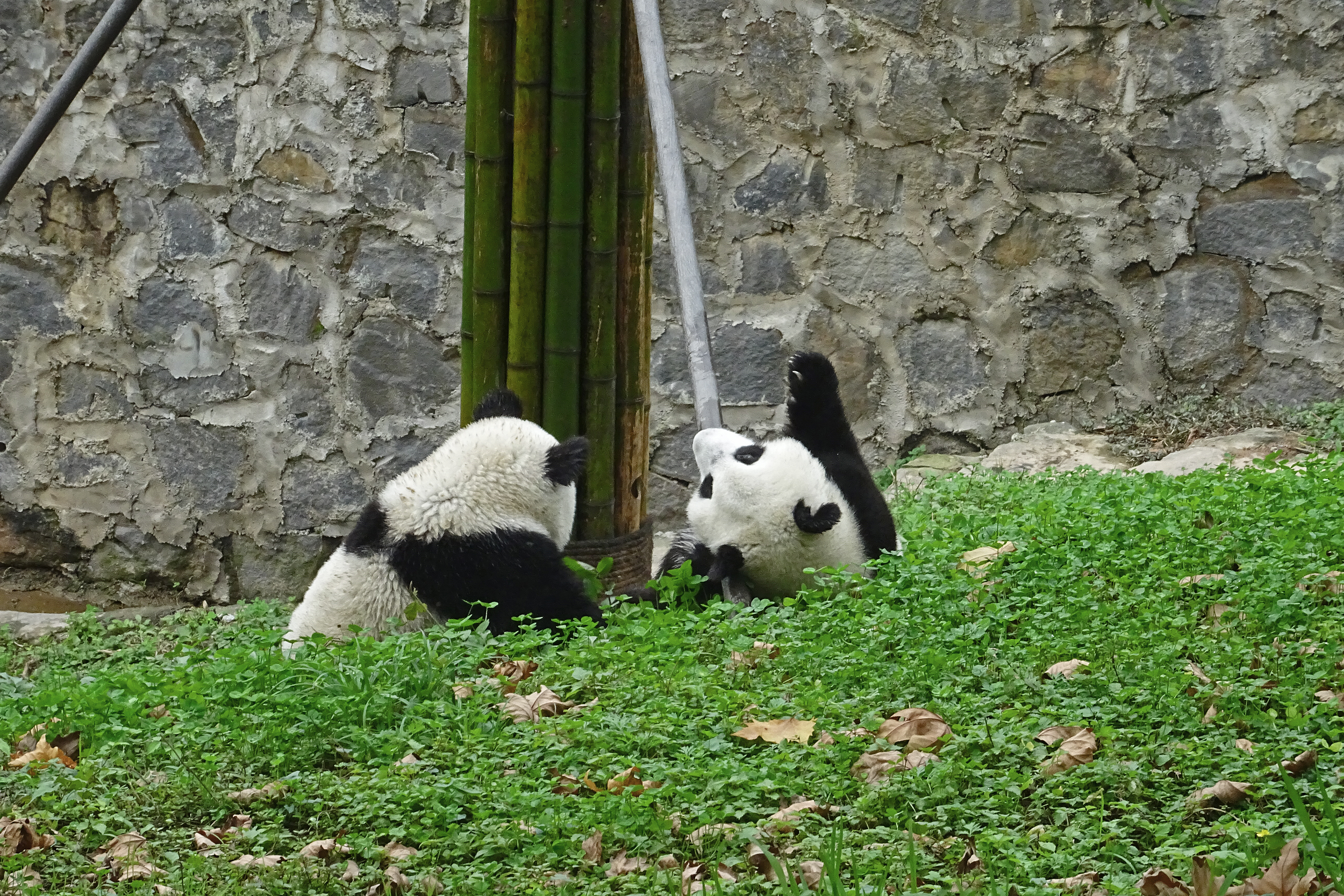
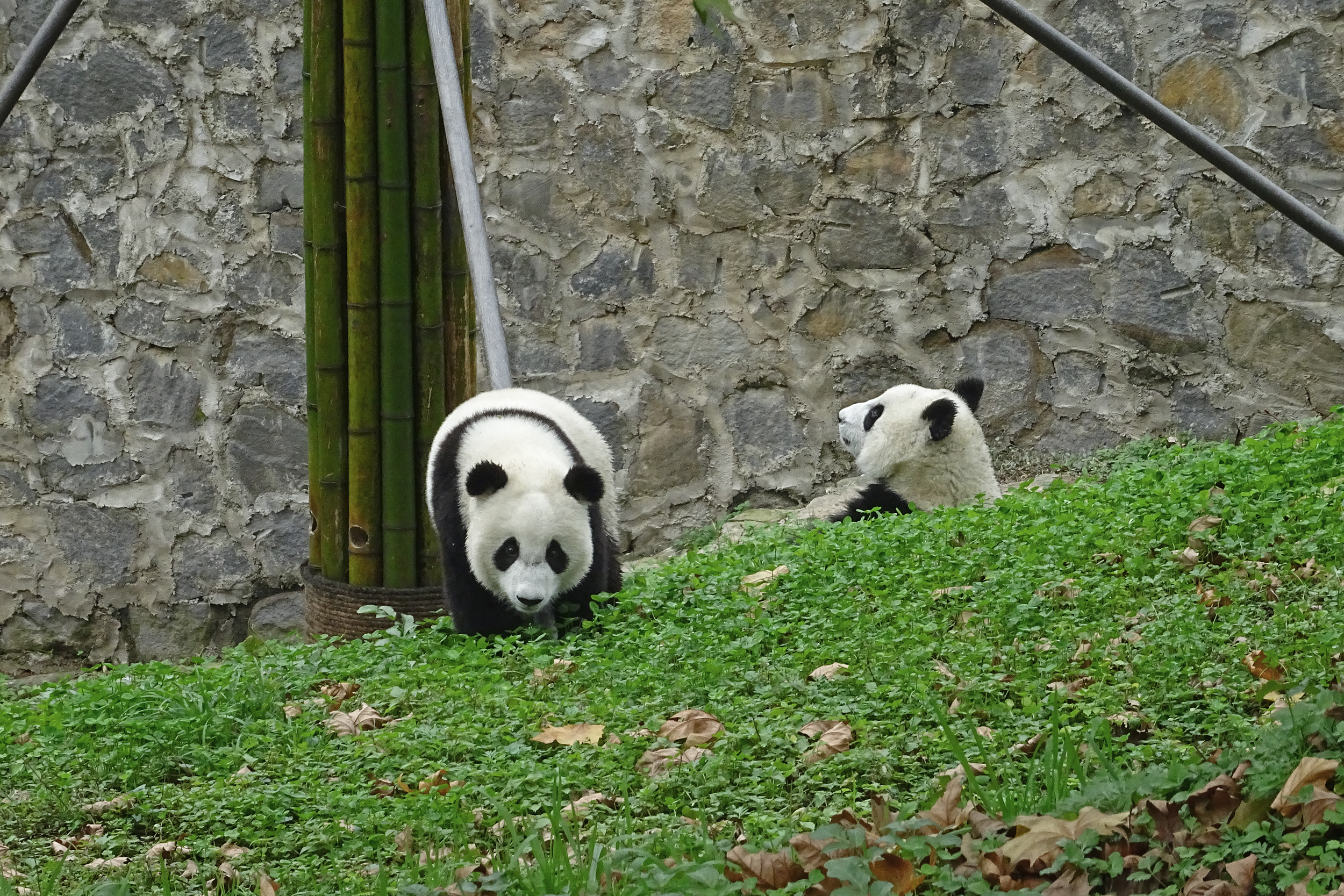
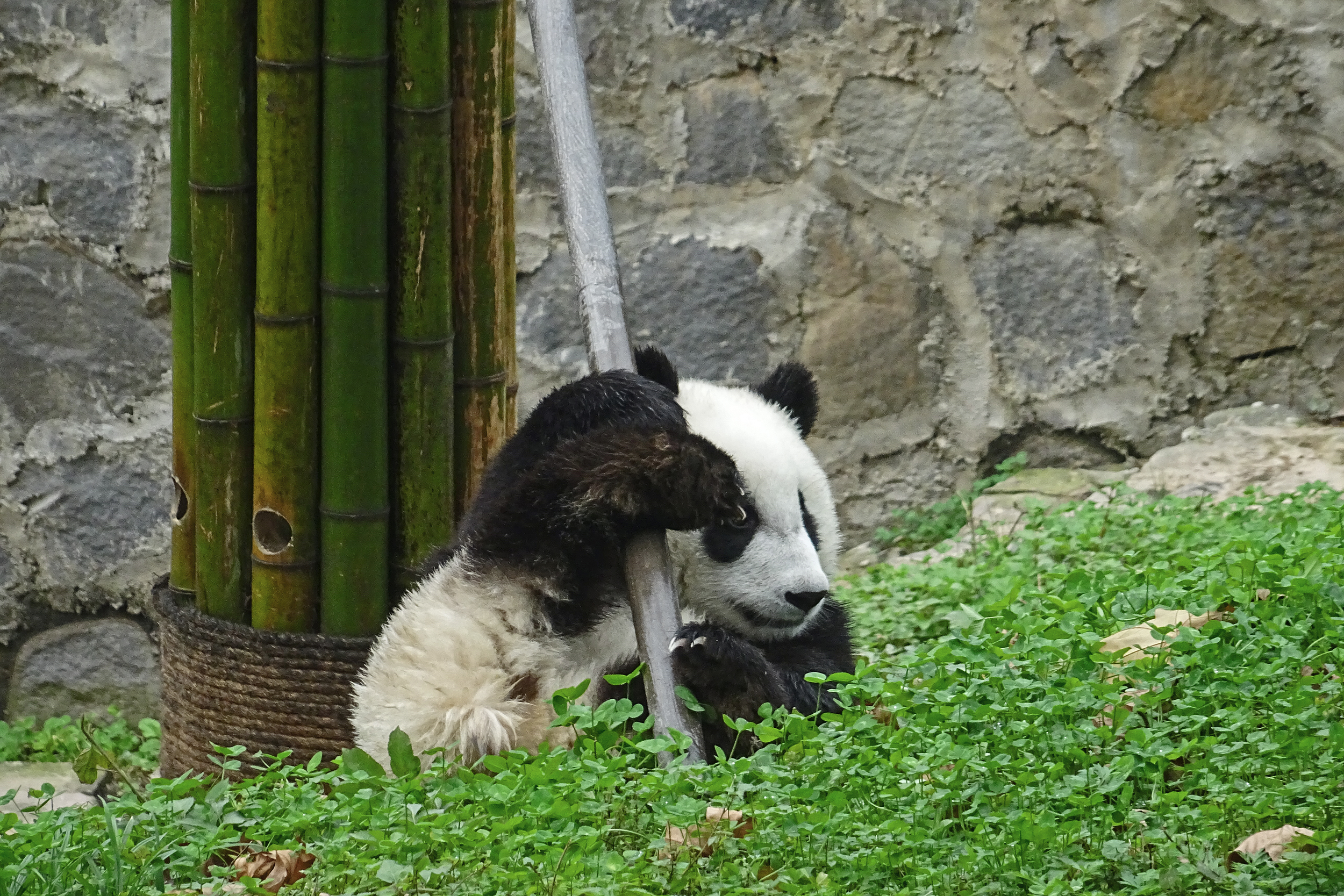
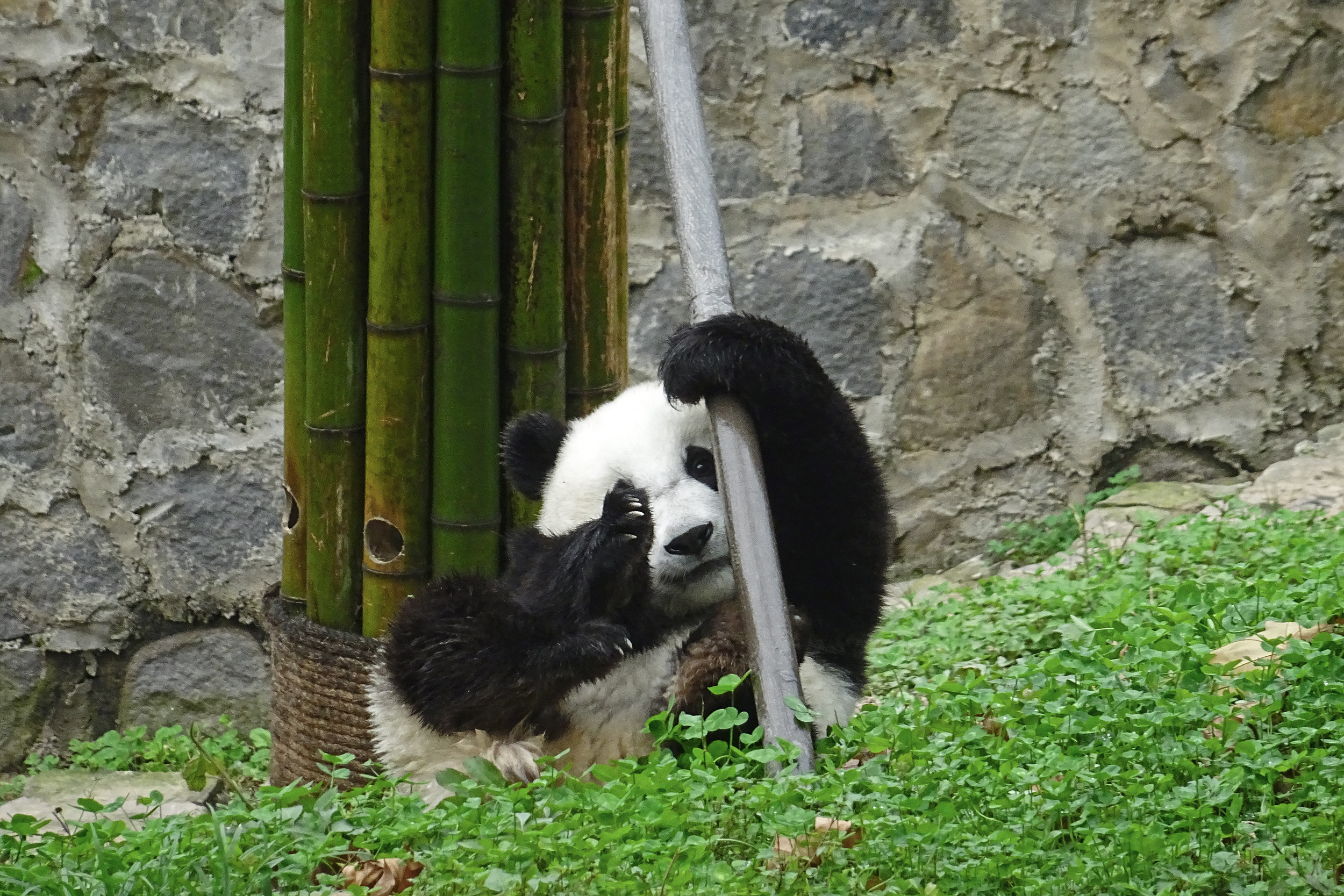
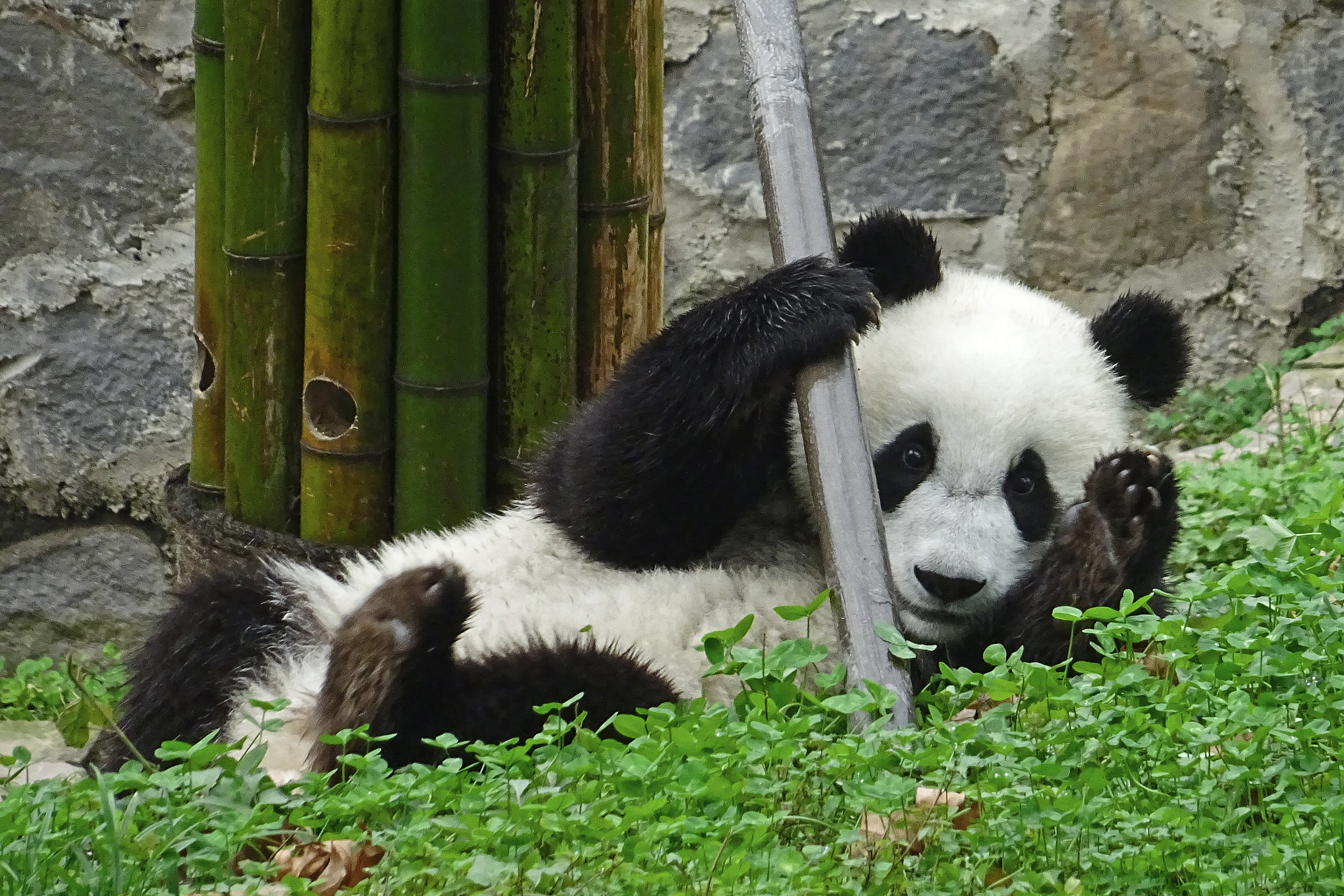
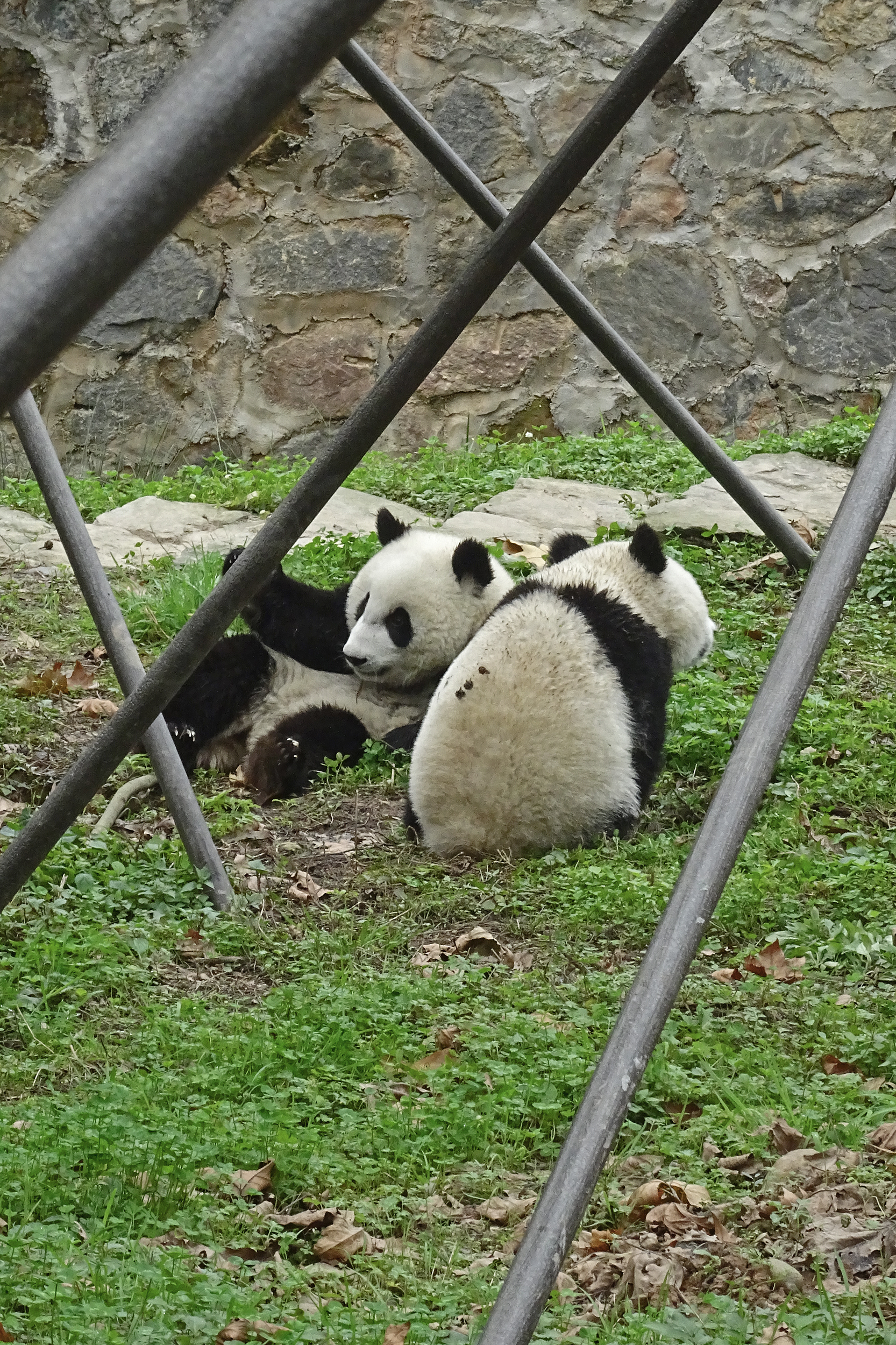
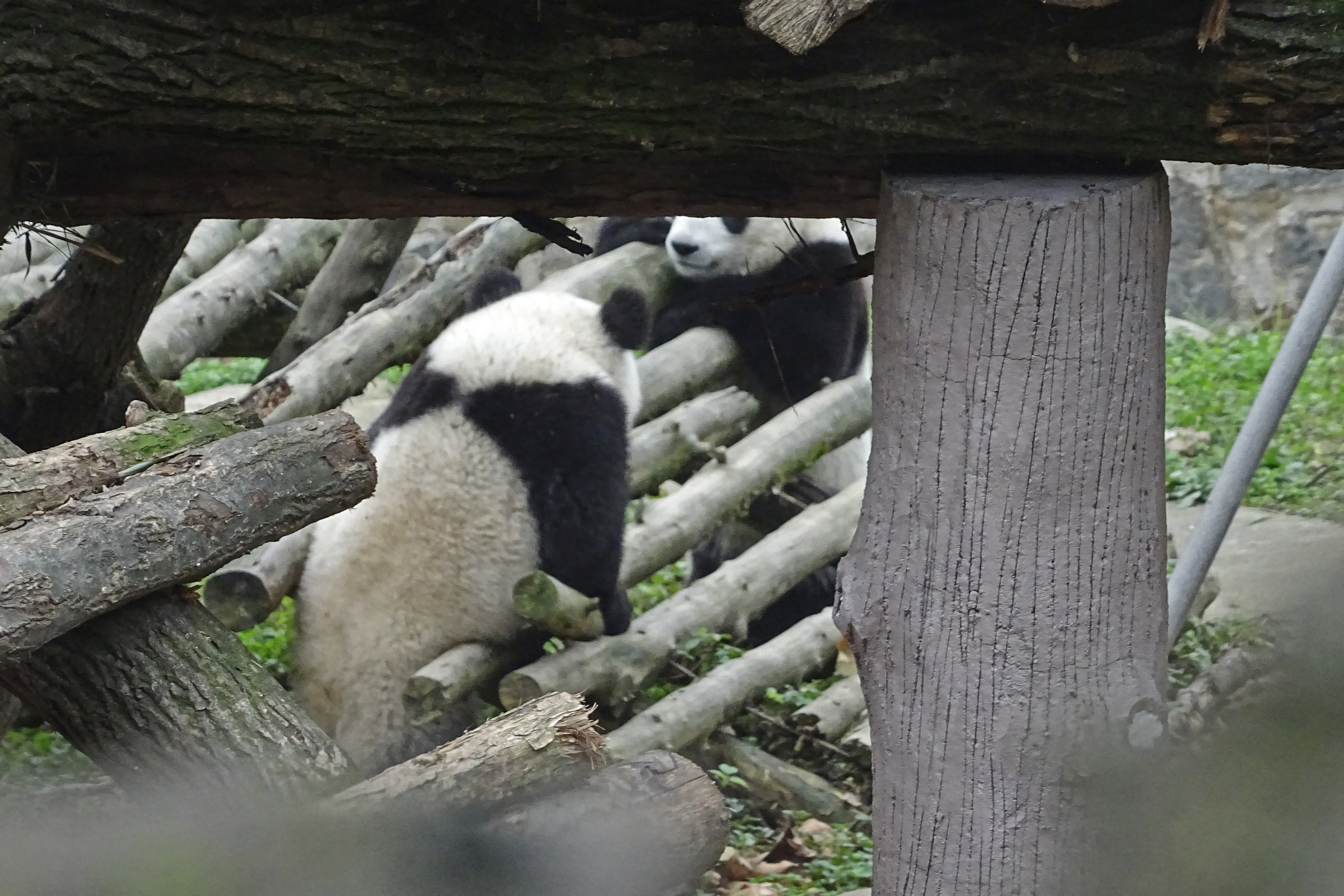
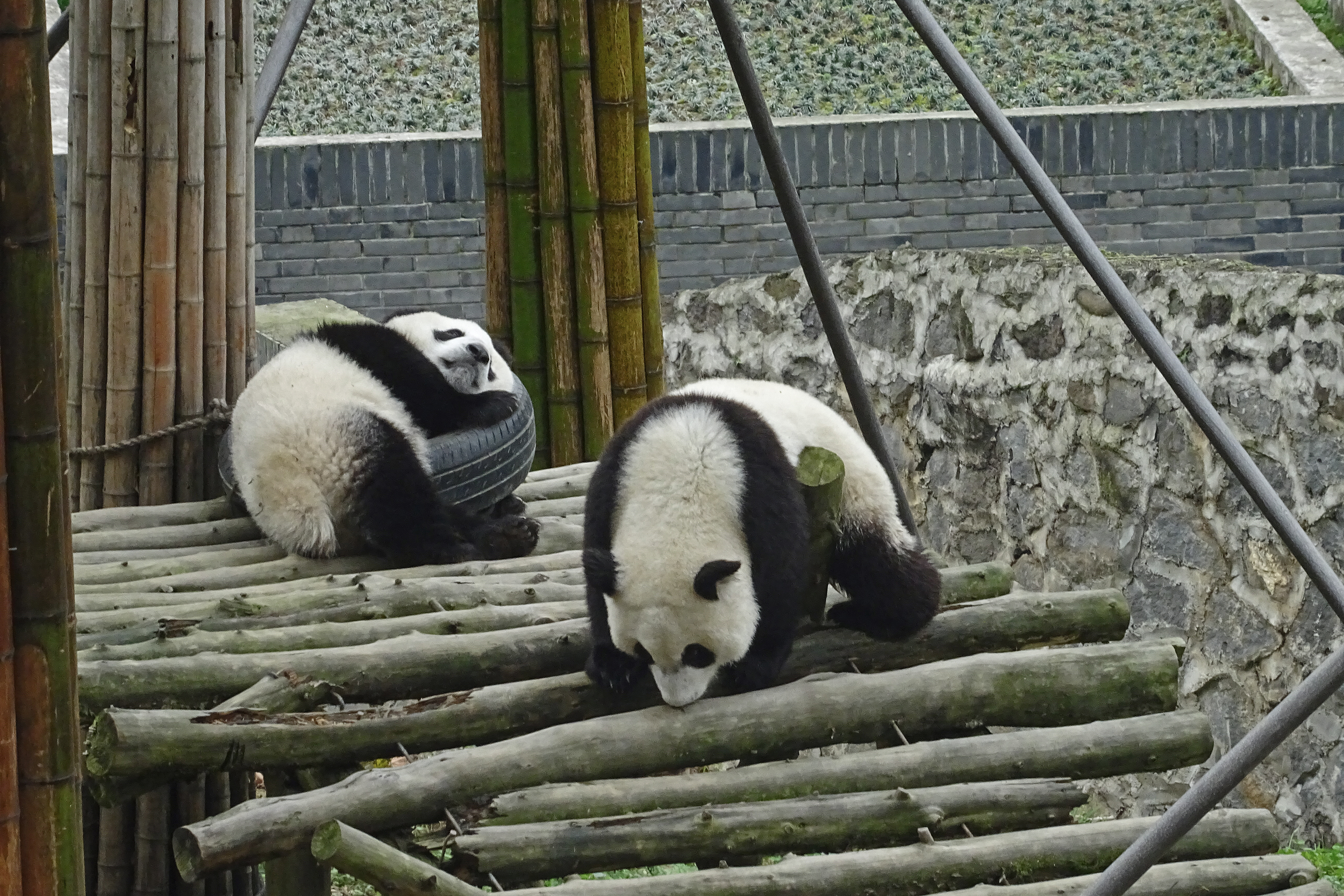
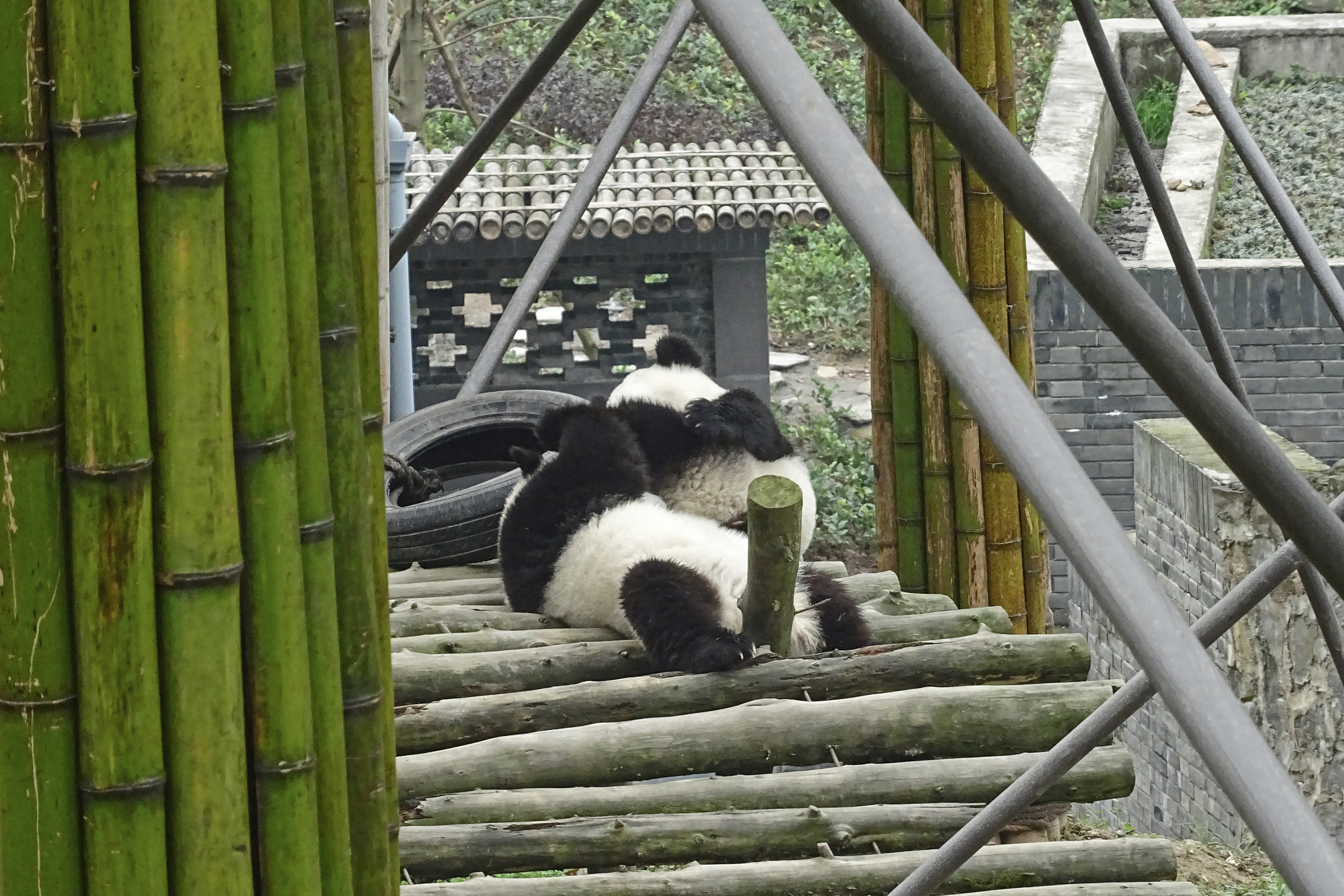
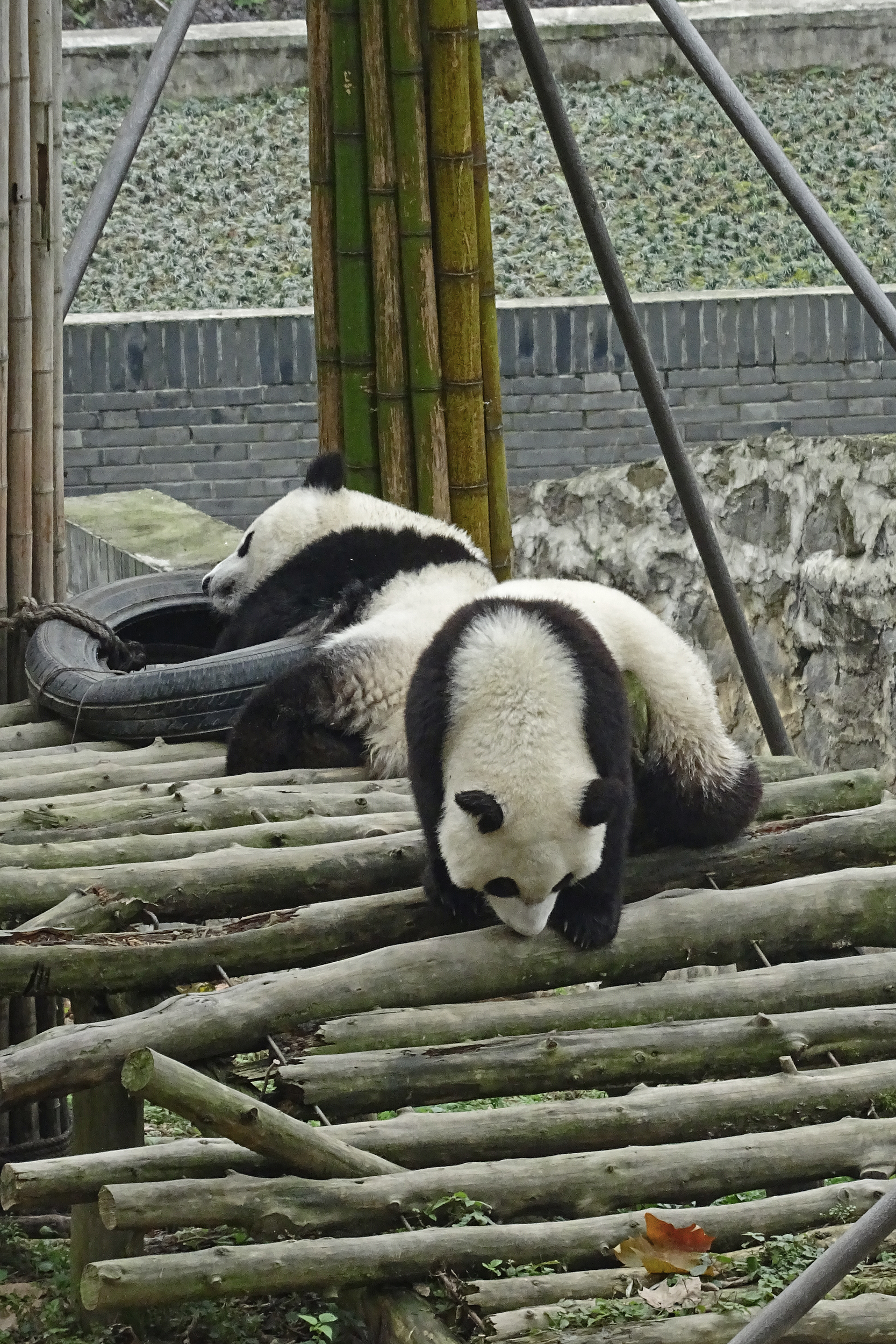
And lastly there were a pair of older cubs (twins) still living together, Qing Qing and Bing Bing were just over two years old here – I’d say Qing Qing is the more well-known, having a distinctive pink section on the lower lip, and also having a featured spot on the iPanda cameras. These two were still playful with each other, with a lot of rough-and-tumble but still being super cute!
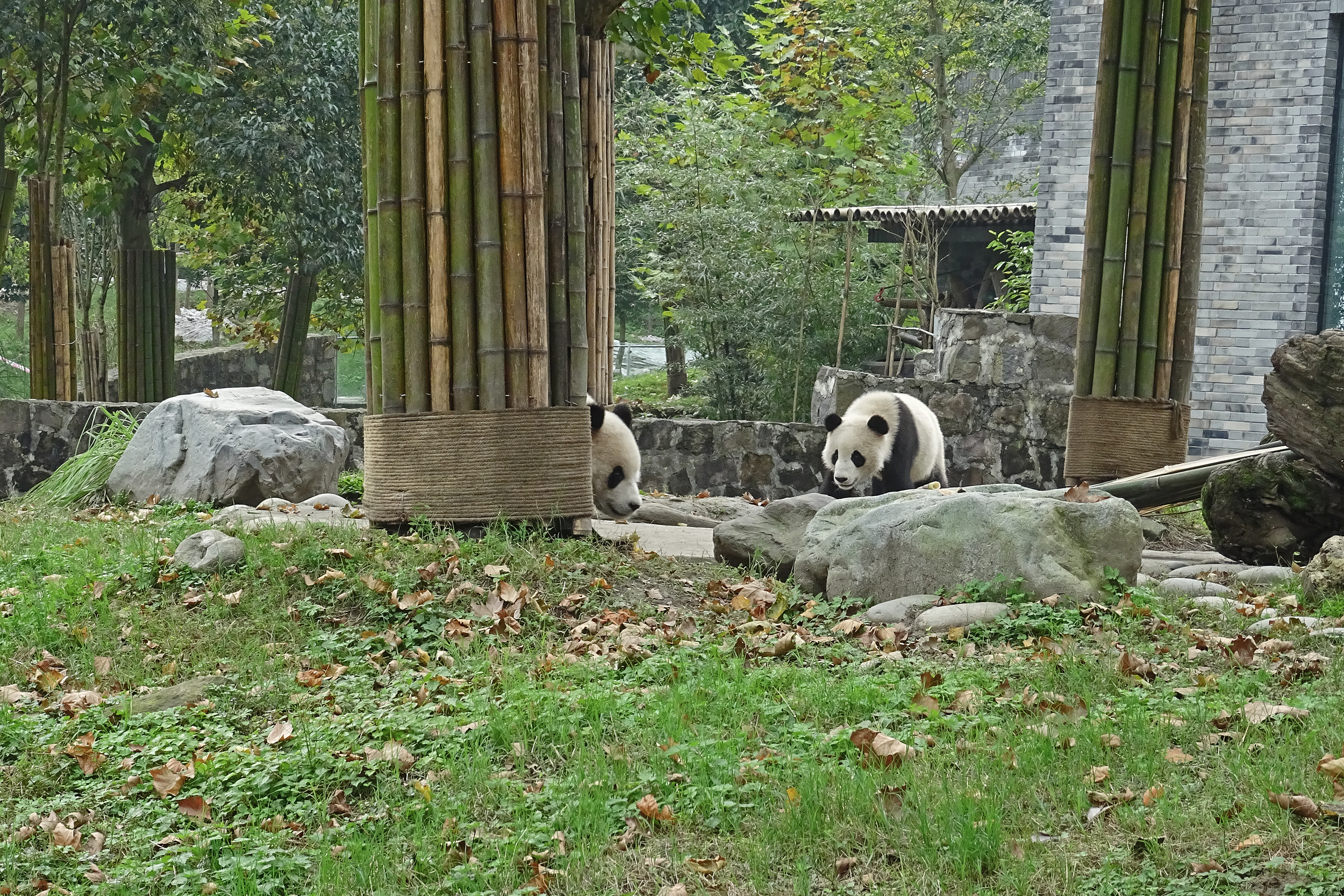
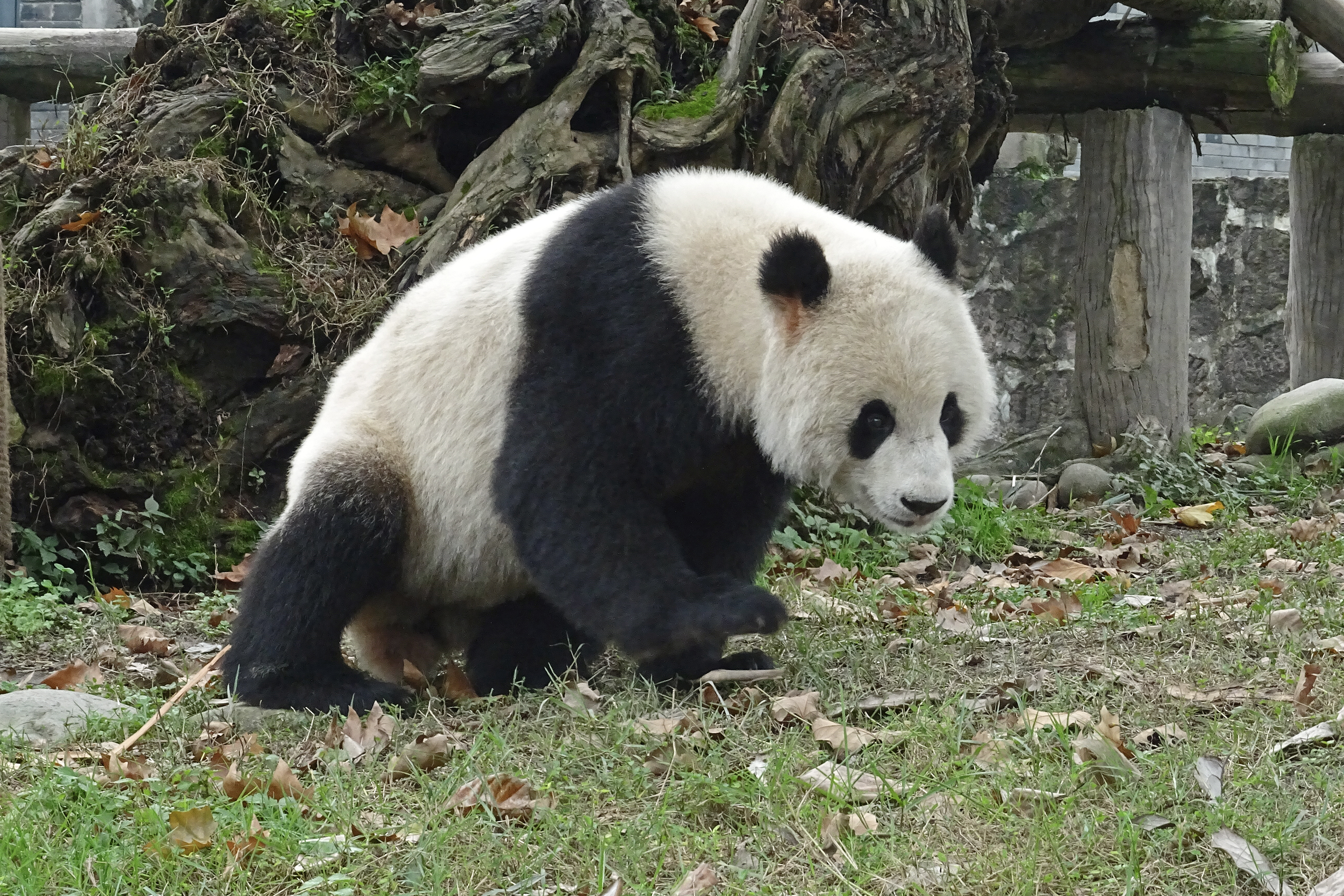
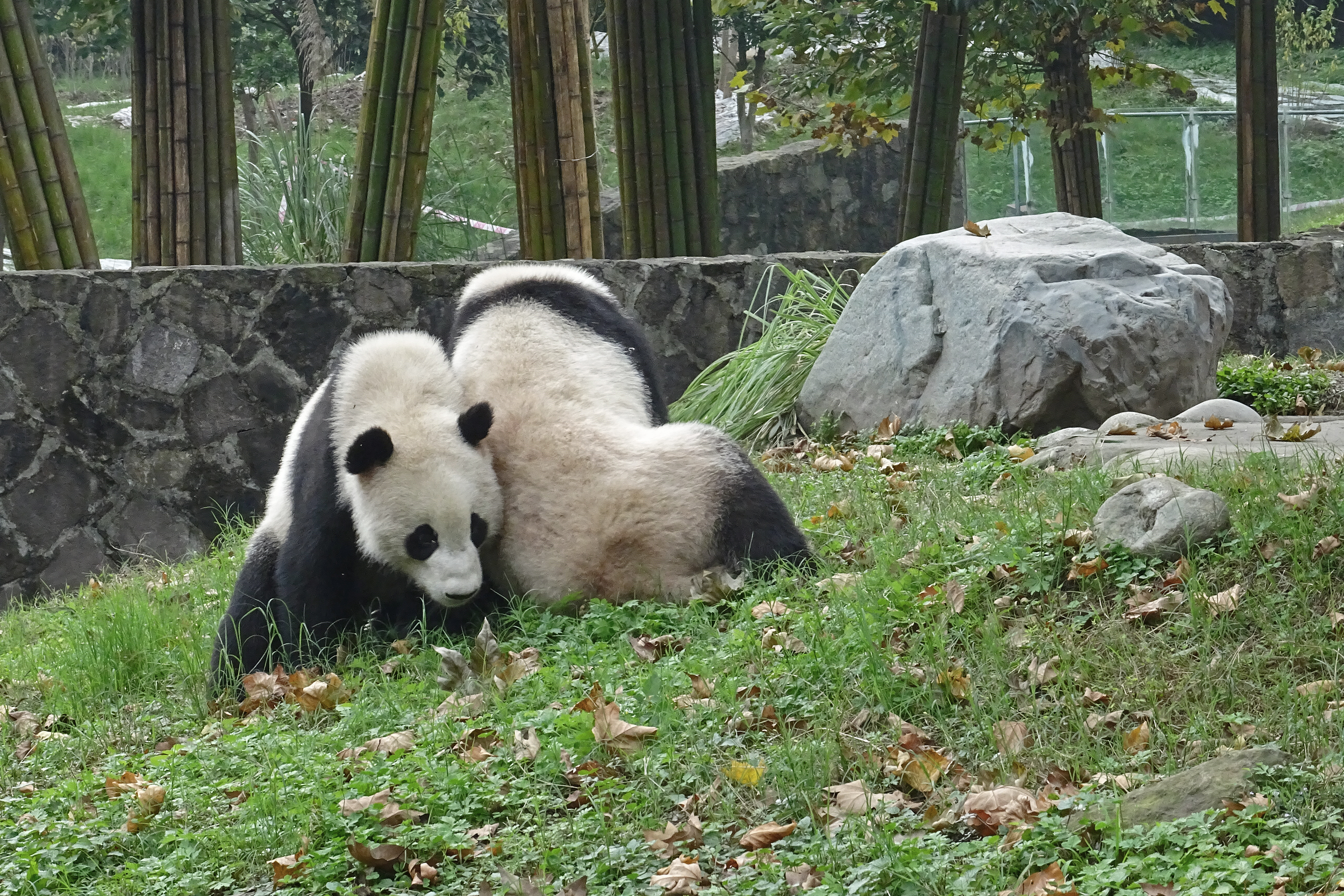
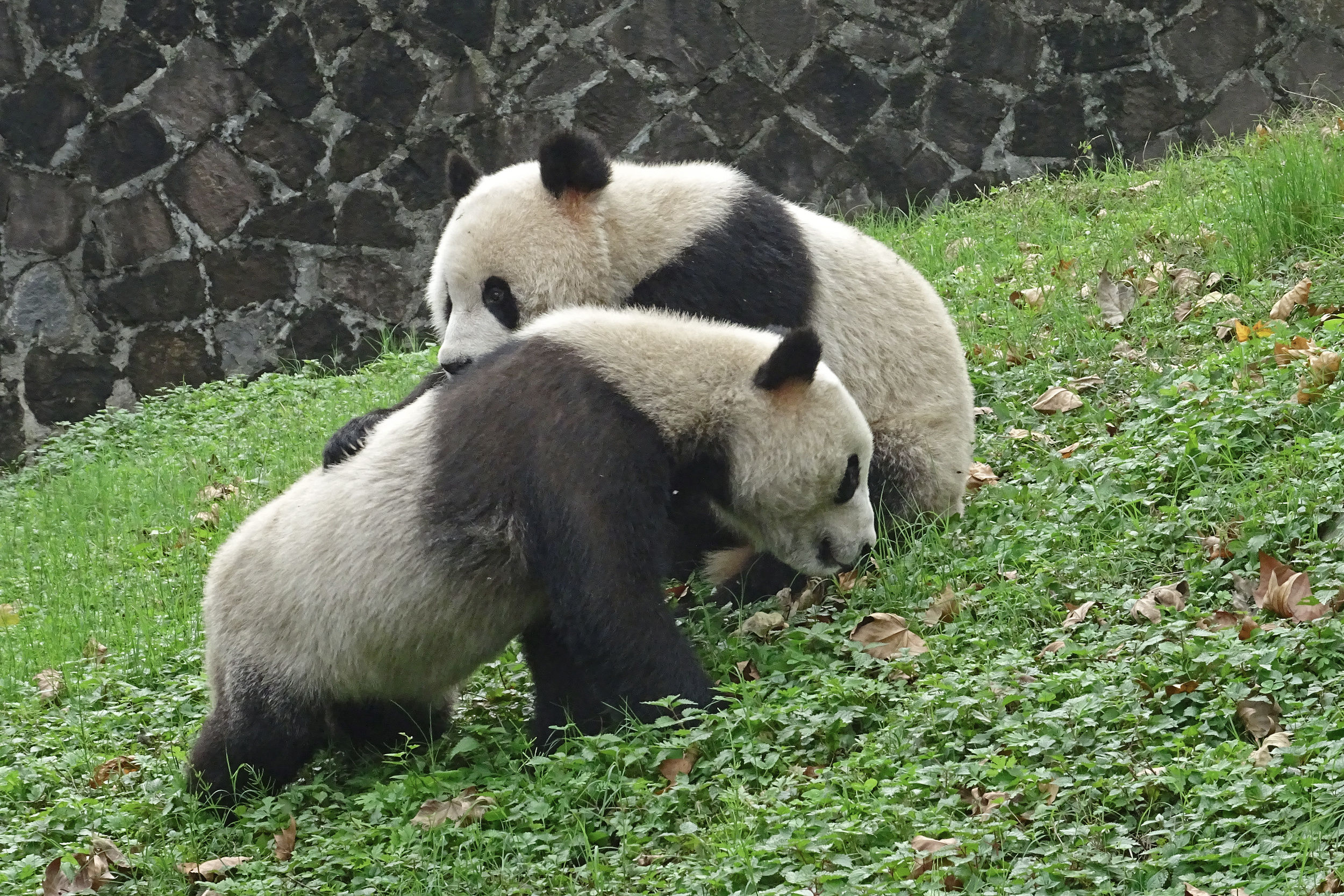
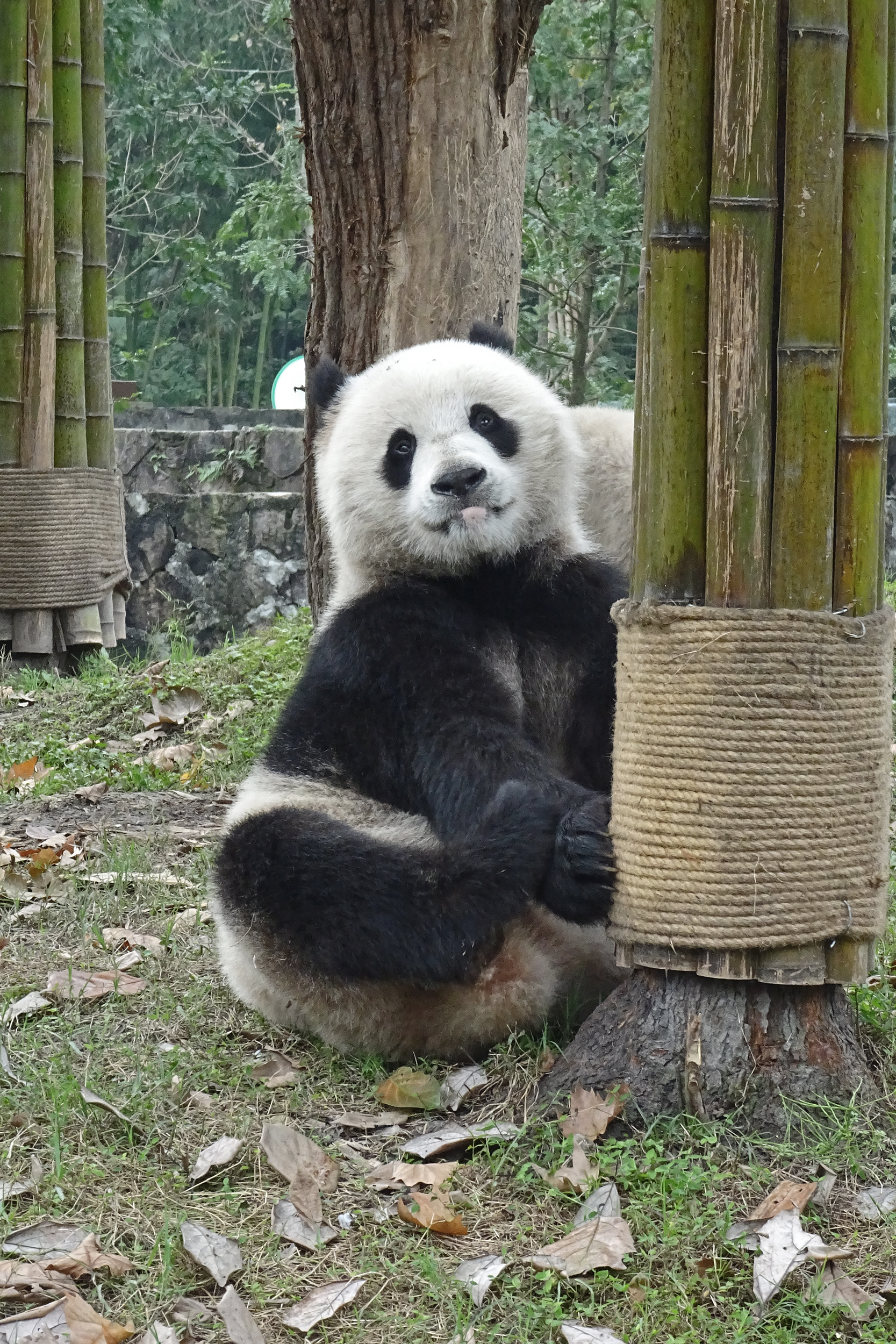
And of course there were still two enclosures of red pandas, I only ended up with a couple of pictures that were in focus, there were quite a few red pandas in the enclosure and they were running about all over the place!
